Features of pruning gooseberries in spring
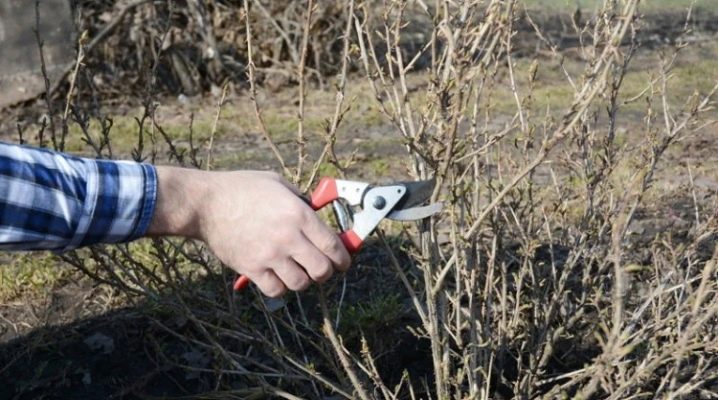
The benefits of eating berries are enormous. Having a summer cottage, it is worth thinking about what exactly needs to be planted on it, which crops will require a small expenditure of effort and finance and will give a good harvest of tasty fruits.
In addition to the favorite berries of strawberries, raspberries, blackberries and others, gooseberries are no less useful and tasty. To get a bountiful harvest of gooseberries, you need to be able to care for the bush, cut it off correctly and in a timely manner in the spring.
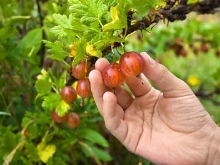
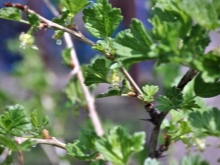
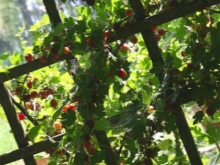
The need for a procedure
Each crop in the garden has its own developmental characteristics, and caring for it may differ. When growing gooseberries, it is important to know when and how to feed the crop, how often to water, what conditions to provide for normal growth and active fruiting. The bushes of this plant throw out new branches every year, and over time, the plant becomes very thickened, which negatively affects its condition.
The pruning procedure can be carried out twice a year, in autumn and spring. Each gardener decides for himself which option is closer to him. Many people think that pruning gooseberries in spring is more beneficial, the main advantages are:
- correct and accurate shaping of the bush;
- the ability to prune diseased and not overwintered branches;
- creating comfortable conditions for future fruits so that they are better illuminated by the sun;
- the absence of unnecessary branches allows the bush to throw all its strength into the formation and ripening of large fruits;
- the creation of the optimal length of the branches minimizes the chances of accidental rooting of the crop.
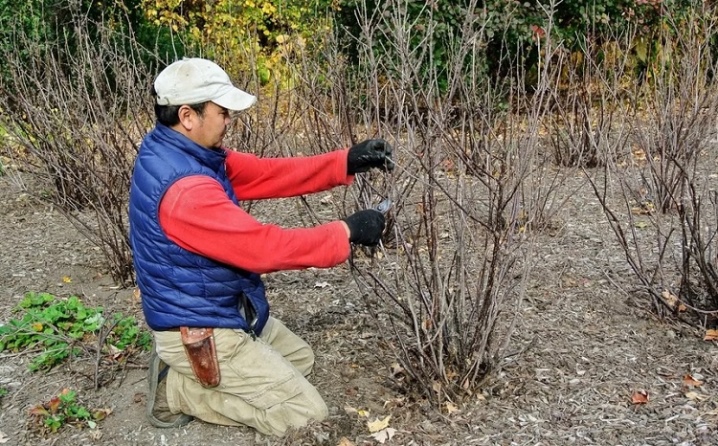
In addition to the pluses that can be obtained by pruning gooseberries in the spring, there is also a minus. If the procedure is delayed, and the bush begins to actively develop, then pruning can cause the death of the plant or its strong weakening. In addition, untimely cutting of branches can stimulate the appearance of an excessive amount of new growth, which will negatively affect the fruiting process.
Spring pruning is carried out for the following purposes.
- For the healing of the bush, since all the spoiled branches affected by pests and diseases are removed.
- For yields, because thanks to the optimal number of branches, the sun and wind make their way into the bush, which allows the berry to grow large and tasty. The thickening of the plant interferes with the full flow of useful components to the crop.
- For decorativeness. The appearance of the bush should be a decoration of the garden, and not spoil it. A neatly trimmed plant looks good and bears fruit better, and a neglected bush will not bring any significant benefit.
In order for the gooseberry to bear fruit well and in large quantities, it is important not only to cut the branches, but also to do it correctly, choosing the optimal time for this.
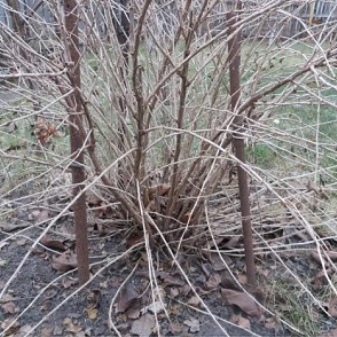

Timing
As mentioned earlier, gooseberry pruning can be done in the fall and spring. Gardeners themselves determine when it is more convenient for them to carry out this procedure, but most are inclined to believe that spring work is more favorable for the shrub. To remove the excess and prepare the plant for the season, it is important to choose the right time to start work. The timing of pruning may vary depending on the region and temperature indicators in it. After winter, the bushes are in a dormant state, the juice does not circulate through the branches, which means that it is absolutely safe to remove excess growth.If you are late with the start of work and cut off the revived plant, this can slow down its growth and negatively affect future fruiting.
It is recommended to prune gooseberry bushes in March, and in cold regions you can also work in April if the plants have not completely moved away from wintering. The shrub comes to life very early after winter, so it is important not to miss the right moment.
The optimal period in the middle lane is the beginning of March. In the suburbs, depending on weather conditions, work begins at the end of February or in March. In the southern regions, they are also guided by temperature indicators: if the winter is warm and the snow has melted, you can start working with gooseberry bushes.

Preparation
The success of any work in the garden depends on the ability to carry out certain activities. With experience and knowledge, it is possible to properly and timely prune the bushes, apply fertilizers, water and maintain the plants in optimal condition, collecting stable and high yields of fruits. In the absence of experience, it is necessary to study in detail the features of the growth and development of gooseberries, the pruning process, the varieties of this procedure, and familiarize yourself with caring for the bushes.
Any preparation of bushes for the season consists in cleaning old leaves, treating the soil from pests and diseases with special solutions, loosening the soil and watering. If you do not remove old leaves, there is a risk of diseases and pests on the young growth, and the bush will be spoiled. Loosening the soil will allow air to reach the root system faster, which will speed up the awakening of the plant. Irrigation measures will nourish the soil and provide a supply of moisture for the growth of new shoots. In order for the gooseberry to grow well, it is important to prune it correctly, removing spoiled, old and unnecessary branches.

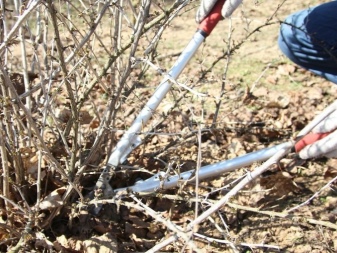
Schemes for pruning bushes
To properly prune gooseberries and other crops, you need to know the main features of this process. For beginners, there are various schemes, after reading about which and watching a video on this topic, you can get basic knowledge. The need to prune branches comes down to the following goals:
- form new shoots;
- allow the sun and wind to fall into the middle of the bush;
- prevent the appearance and spread of fungi and diseases;
- increase the fruiting of the shrub;
- remove dry, spoiled and diseased branches;
- rejuvenate the plant.
Beginners can work with bushes in stages:
- cut out all dry branches;
- cut off all shoots growing from the ground to a height of 10 cm;
- trim all branches growing inside the bush;
- carry out the removal of all processes growing to the sides, increasing the volume of the bush.
The correct formation of the bush is the key to the rapid growth of the plant and good fruiting. If the gooseberry is strongly thickened, the wind does not blow well on the inside of the plant, good conditions are created there for the reproduction of pests and the development of diseases. An insufficient amount of sun, which cannot break through dense vegetation, also adversely affects the development of culture, it ceases to grow actively and bears poorly.
Cutting any shrubs allows you to keep the garden in order, minimize the risks of diseases and pests, create a beautiful and eye-pleasing appearance of the site and get a tasty and rich harvest from it. If the pruning of the bush was done in the fall, in the spring it is enough to thin out the bush, if some of the branches have not overwintered. By understanding the basic rules for pruning, you can easily tidy the gooseberries. There are different schemes for pruning bushes, each of which has its own characteristics.

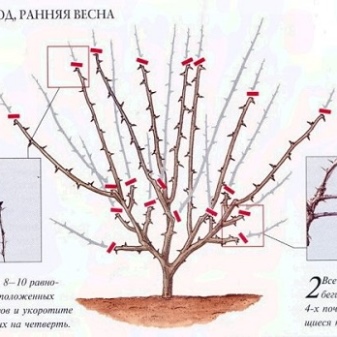
Rejuvenating
The gooseberry bush can produce good yields for 5 years, after which the number of fruits begins to decline. To rejuvenate the plant, it is necessary to carry out anti-aging pruning. The essence of the method is to activate the supply of power to the branches - the fewer there are, the better the bush grows, so it is important to remove excess stems. Depending on the age of the bush, the procedure may differ.
- A plant no older than 10 years old needs to remove all old, spoiled and diseased branches. It is important that the amount cut does not exceed a third of the entire bush, otherwise it may die. It is important to inspect the tops of the stems for problems - if any, the branches are trimmed to the first lateral shoot.
- The rejuvenation of the old bush, which is more than 10 years old, is carried out more intensively. It is necessary to select 5 healthy and strong stems on it, cut off the rest. After such pruning, the bush gives new growth in the shortest possible time, and the plant begins to develop with renewed vigor.
Very old plants, which are more than 20 years old, are no longer pruned, such bushes will not be able to survive extreme intervention and will die.
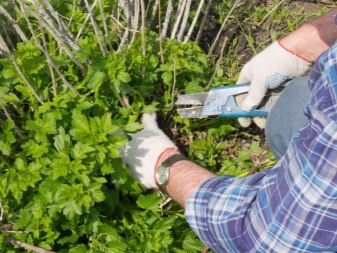
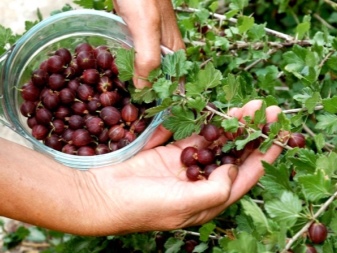
Formative
In order for the bushes on the site to look neat, beautiful and bear fruit well, they need to be shaped. Formative pruning is carried out every year and consists of simple steps to keep the bush in optimal condition.
- The first time pruning should be done as soon as the seedling has been planted in the main growth site. All damaged and ugly branches are removed from the plant, healthy ones are shortened to 3-4 buds. The cut is made above the bud and the branch is cut diagonally.
- A young bush of the second year of life has 2-3 two-year-old branches and 3-4 annual shoots. It is necessary to select 6-7 healthy stems growing from the soil and shorten them to a height of 30 cm, the remaining branches are cut to a height of 20 cm. Any horizontal growth that grows lower than 20 cm from the ground should be removed. Such twigs take a lot of nutrients and moisture from the bush, which does not allow a strong growth to grow quickly.
- In the third year of gooseberry growth, it is necessary to leave about 15 healthy branches that grow from the ground, remove all weak, horizontal and growing chaotically. Shorten the tops of the shoots by 15 cm to stimulate vigorous growth.
- Starting from the fourth year, the bush is considered an adult, it already has about 20 strong branches that need to be monitored. Young shoots growing from the ground must be cut out, horizontal branches must also be removed, the edges of the stems are shortened by 10-15 cm.


On the trellises
To grow gooseberries on trellises, you need to put supports and pull a wire or dense garden thread on them. The distance between the rows should not be less than 1.5 meters, and the bushes should be planted 1 m apart. The peculiarity of the trellis growing method is that the bushes are tied to supports, which allows you to evenly distribute light and ensure air permeability to the plant. The lower branches are cut to protect the crop from unwanted pests and diseases that can get on the bush from the ground.
Gooseberry pruning for this cultivation is carried out in such a way that no more than 4 branches remain on the bush, which are attached to the lower wire, all the rest of the growth is removed. The branches on the trellis are arranged vertically and in different directions, outwardly the bush looks like a fan. In the second year of culture growth, the shoots are tied to a second wire, the middle branches are shortened a little more than the rest, and the horizontal branches are also trimmed. The basal and null processes are completely removed.
After the sixth year of gooseberry growth, it is necessary to rejuvenate the bush.
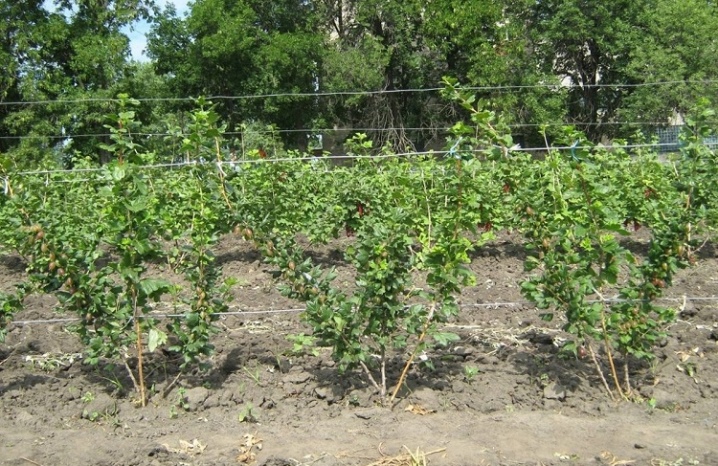
On the trunk
An alternative method for growing gooseberries is to form a stem - a plant similar to a small tree. To prune a crop in this way, you must adhere to these recommendations.
- Find the healthiest and strongest shoot, which is approximately 1 m long.
- Remove all other branches.
- Cut off the side shoots on the trunk of the bush. To keep the plant upright, you can fix it with a tube or in another way, and then tie the gooseberries from different sides.
- Prune as for any shrub or tree.
- Up to 5 strongest branches are left annually, the rest are cut out.
- The shoots of the last year are cut in half.
- Remove branches growing from the roots and those that form an irregular crown or have problematic development.
- Mulch bushes near the trunk.
Such bushes take up little space, look beautiful and give a good harvest, however, they are less durable and do not tolerate frost well, so the standard cultivation option is not suitable for all regions.
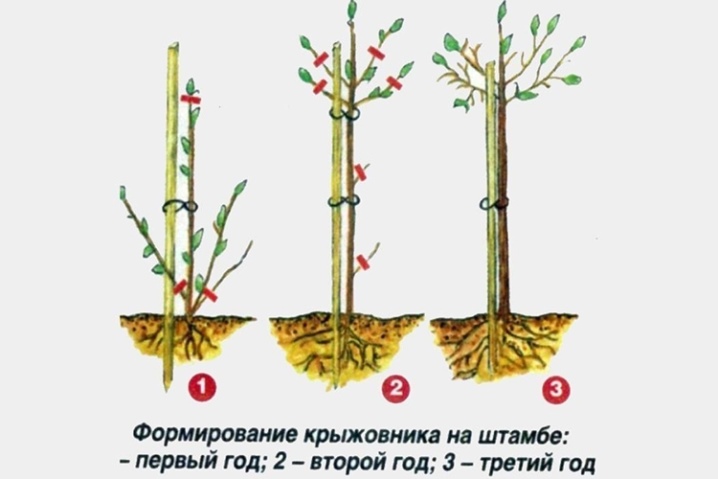
Follow-up care
Timely pruning of gooseberries has a positive effect on the plant and allows it to grow quickly and actively from the moment the bush wakes up. If it becomes necessary to remove a lot of thick branches, the culture may be more difficult to endure this process, so you can help it and use a special garden pitch for processing the cuts. To prepare it you need:
- melt and mix paraffin and rosin in a ratio of 6: 3;
- add vegetable oil (2 parts);
- bring to a boil and leave on fire for half an hour;
- wait until the composition has cooled down, and can be applied to slices.
After pruning, you need to carry out a number of gooseberry care activities:
- watering the soil if it is dry;
- weeding;
- treatment of bushes from pests and diseases.
If the culture grows poorly, timely feeding is necessary: fertilizers are applied in early spring, at the time of the appearance of inflorescences, the formation of the ovary, and in preparation for wintering. The combination of competent pruning of bushes and full care of the crop allows you to enjoy tasty and healthy berries for many years.
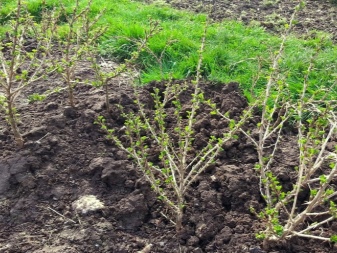
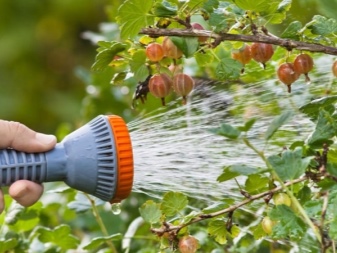





The comment was sent successfully.